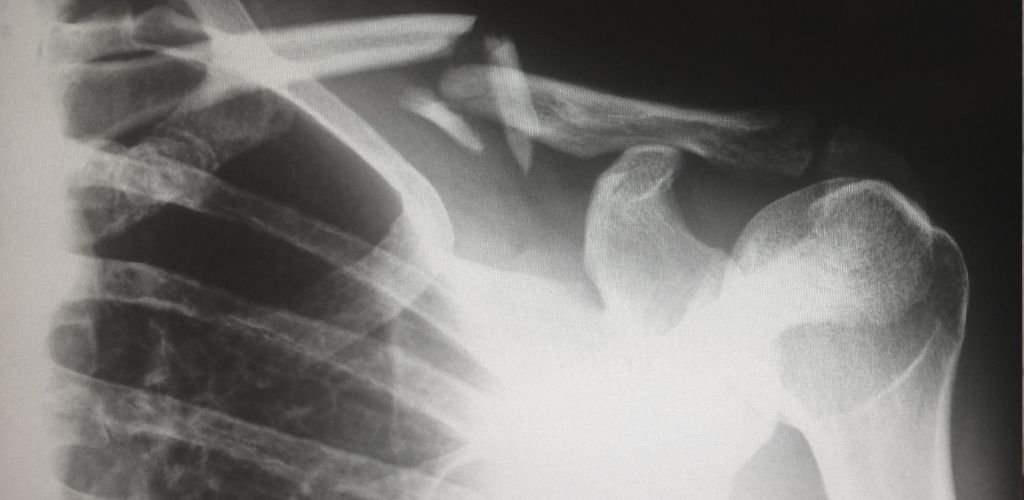Mountain biking, something many of us, including myself are obsessed with, is a sport that perfectly blends the joy of cycling with the gnarly adventure of shredding off-road trails, offers a unique way to explore nature, and tests physical and mental boundaries.
While it presents an exhilarating experience, it’s important to acknowledge the risks involved and understand how to mitigate them.
In my many years of mountain biking I’ve crashed countless times, and as a result have sustained a multitude of cuts and bruises, fractured a couple of ribs, and cut my elbow down to the bone landing on a rock – but nothing broken and no head/neck or back injuries, thank god.
This comprehensive look into the world of mountain biking will cover the inherent dangers, recent statistics insights into mountain biking injuries in the USA, and some of the main things to keep in mind when getting into mountain biking – so you go into it with your “eyes wide open”, as they say! 🙂
Understanding the Risks
Types of Injuries
The sport’s very nature – navigating through uneven terrain, roots, rocks, and at times, high speeds – increases the likelihood of falls and collisions.
Injuries can range from minor scrapes and bruises to more severe ones like fractures and concussions.
In extreme cases, life-threatening injuries are also a possibility.
Factors Contributing to Risk
Risk factors in mountain biking include:
- Skill Level: Beginners, due to their inexperience, face a higher risk of accidents.
- Trail Difficulty: Opting for trails that exceed one’s skill level can (and do) lead to mishaps.
- Equipment: Inadequate or poorly maintained bikes heighten the risk factor.
- Environmental Conditions: Weather changes can make trails more treacherous.
Recent Mountain Biking Injury Statistics in the USA
Recent data shed light on the most common specific risks associated with mountain biking:
- Head Trauma and Concussions: These injuries, including concussions, are common due to falls and collisions, with varying severity and long-term effects.
- Bone Fractures: Rough terrains significantly increase the risk of bone fractures, necessitating extended recovery periods.
- Joint Injuries: Shoulders, wrists, ankles, and elbows are particularly vulnerable, especially during downhill riding.
Interesting Statistics for 2023
- Injury Distribution by Body Part: Hands, head, lower legs, elbows, and knees are the most commonly injured body parts.
- Risk of Falling Off the Bike: Perhaps unsurprisingly, falls account for about 70% of mountain biking injuries.
- Injury Severity and Recovery Time: Shoulder/clavicle injuries are prevalent, with varying recovery times depending on severity.
Safety Measures
Proper Training and Preparation
- Skills Training: Essential for learning techniques and reducing risks.
- Physical Fitness: A key factor in minimizing injury risk.
- Pre-Ride Checks: Crucial for ensuring bike safety.
Choosing the Right Equipment
- Appropriate Bike: Matching the bike to the terrain is vital.
- Safety Gear: Helmets, gloves, knee and elbow pads, and eye protection are crucial.
- First-Aid Kit: A necessity for minor injuries and on-trail repairs.
Trail Etiquette and Awareness
- Know the Trail: Being familiar with the trail’s difficulty and features is important.
- Respect Trail Rules: Following designated directions and yielding appropriately is essential.
- Stay Alert: Being aware of surroundings can prevent accidents.
Risk vs. Reward
Personal Risk Assessment
Understanding personal skill level, fitness, and comfort with trail difficulties is important for safety.
The Psychological Benefits
The adrenaline rush, sense of accomplishment, and mental health benefits often outweigh the risks for many riders.
Community and Learning
Engaging with the mountain biking community enhances safety through shared advice and experiences. This is something I began learning from right from my first few rides – watching more experienced riders on the trail network we were riding on, seeing how they stopped to investigate new features and obstacles before riding them, and so on.
The bottom line…
Mountain biking, despite its inherent risks, can be a relatively safe and very enjoyable sport with the right approach.
Proper preparation, respect for the trails, and riding with some decent kit to keep you intact if and when you crash are key. For me, this means a great helmet, eyewear, gloves and often kneepads.
Finding a balance between the thrill and keeping yourself free from injury ensures an awesome invigorating experience.
Stay safe, and enjoy the shred!

